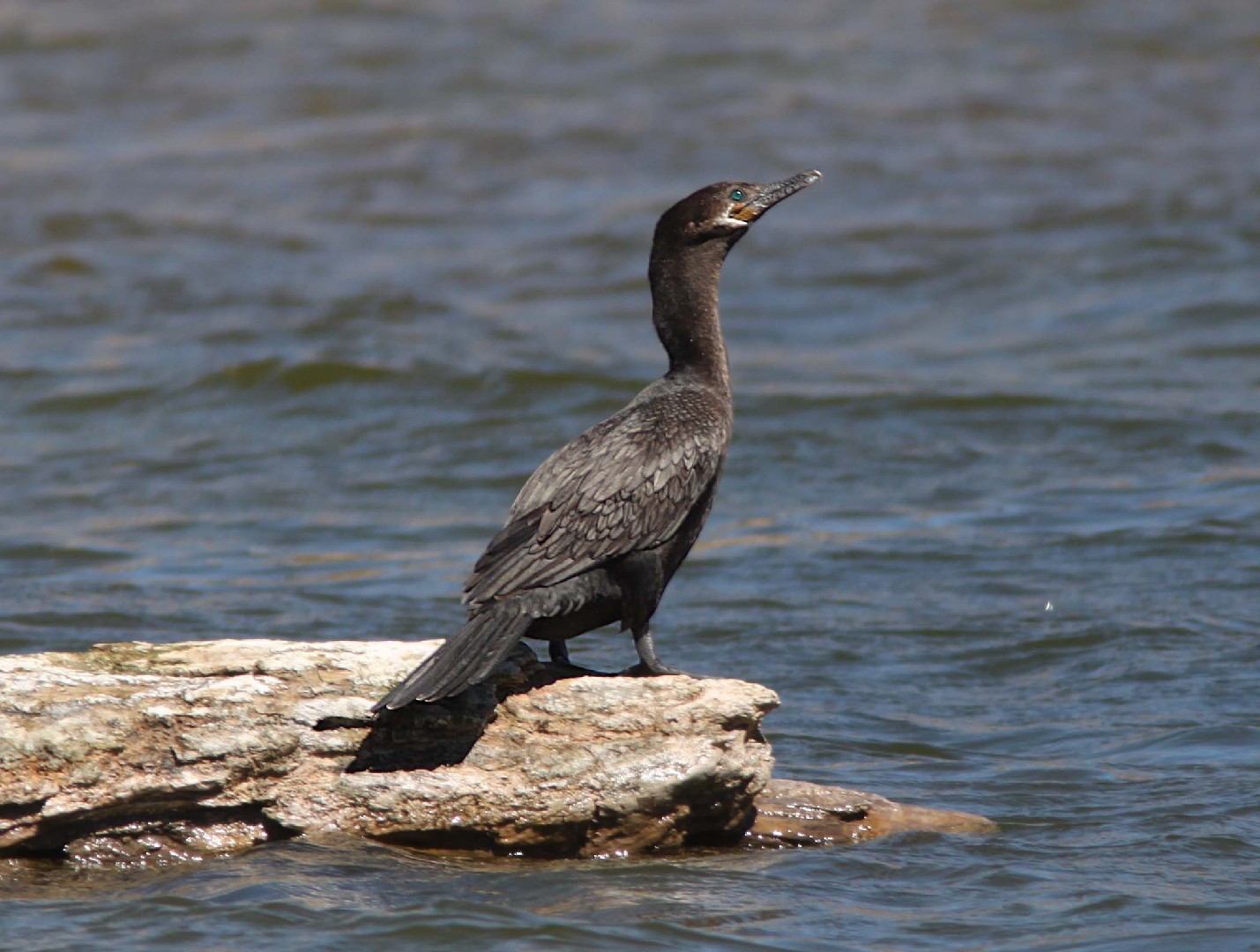Neotropic Cormorant
A species of Typical Cormorants and Shags Scientific name : Nannopterum brasilianum Genus : Typical Cormorants and Shags
Neotropic Cormorant, A species of Typical Cormorants and Shags
Botanical name: Nannopterum brasilianum
Genus: Typical Cormorants and Shags
Content
Description People often ask General Info
Description
This bird is 64 cm (25 in) long with a 100 cm (39 in) wingspan. Adults males weigh from 1.1 to 1.5 kg (2.4 to 3.3 lb), adult females 50 to 100 g (1.8 to 3.5 oz) less. Birds of the southern populations tend to be bigger than the more northerly birds. It is small and slender, especially compared to the larger, heavier-looking double-crested cormorant. It has a long tail and frequently holds its neck in an S-shape. Adult plumage is mainly black, with a yellow-brown throat patch. During breeding, white tufts appear on the sides of the head, there are scattered white filoplumes on the side of the head and the neck, and the throat patch develops a white edge. The upper wings are somewhat grayer than the rest of the body. Juveniles are brownish in color. 
Size
64 - 66 cm
Colors
Brown
Black
Yellow
White
Life Expectancy
12 years
Nest Placement
Tree
Clutch Size
1 - 6 eggs
Feeding Habits
Neotropic Cormorant preys on a variety of both freshwater and saltwater fauna, including fish like mosquitofish, bluegill, and largemouth bass, as well as shrimp, frogs, and insect larvae. Diving and swimming, they visually hunt and capture prey with their bill, consuming small fish instantly or processing larger ones before swallowing. They forage alone or in groups, sometimes using wing-beating to herd prey. Neotropic Cormorant only feeds during daylight and prefers shallower water, not diving as deeply or far from shore as some relatives.
Habitat
Neotropic Cormorant is commonly found in a variety of wetlands encompassing fresh, brackish, and saltwater ecosystems. The species thrives across a range of altitudes, from sea level up to high-elevation lakes and streams at 16,000 feet. The preferred environmental conditions include sheltered waters teeming with fish and featuring rest spots like trees or pilings. Coastal preferences stretch to estuaries and lagoons, whereas inland they frequent marshes, swamps, and rivers, often opting for clearer waters but are also known to navigate murkier conditions.
Nest Behavior
The male neotropic Cormorant selects the site, after which both sexes participate in nest construction. Parental care includes both neotropic Cormorant incubating eggs and feeding hatchlings.
Nest Characteristics
Neotropic Cormorant typically builds its nest in small trees, including dead ones, tall shrubs, human-made structures, or on the ground. Using sticks for a platform lined with twigs, leaves, grass, feathers, or shells, the nest averages 13.5 inches across, 5.6 inches tall, and the bowl is 8.4 inches wide and 2.2 inches deep.
Dite type
Piscivorous
People often ask
General Info
Feeding Habits
Bird food type
Sounds
Call
Recording location: Brazil
Call
Recording location: Venezuela
Behavior
Neotropic Cormorant are known to engage in periods of aquatic hunting followed by rest outside water, during which they hold their wings open to dry the waterlogged feathers. Their daily routine includes meticulous preening to maintain their plumage using oil from their uropygial gland. As breeding season nears, distinct courtship behaviors can be observed, with males performing elaborate displays to entice females for mating. Nest construction is a collaborative effort between males and females, and they exhibit a strong partnership in incubating eggs and feeding offspring. Notably, pair bonds are typically seasonal, and nesting pairs show low levels of conflict.
Scientific Classification
Phylum
Chordates Class
Birds Order
Gannets and Relatives Family
Cormorants Species
Neotropic Cormorant 